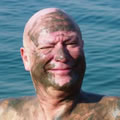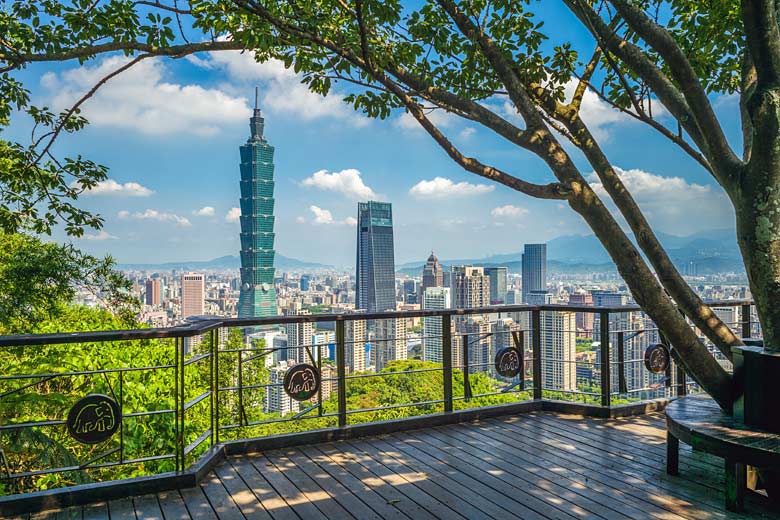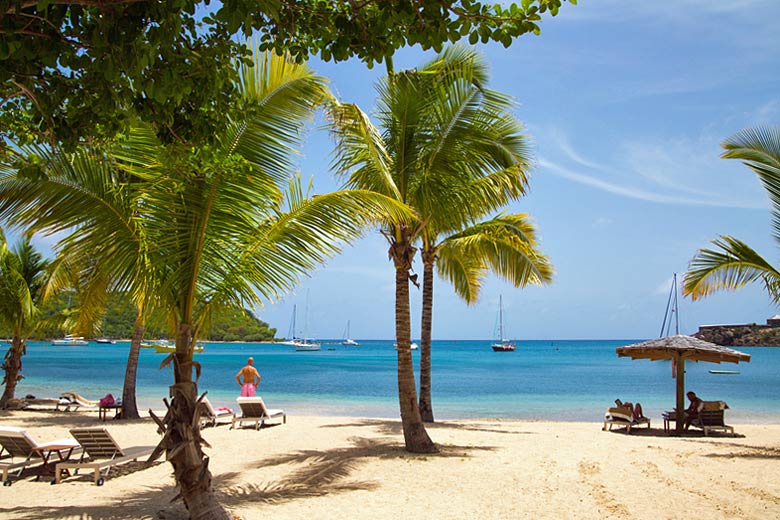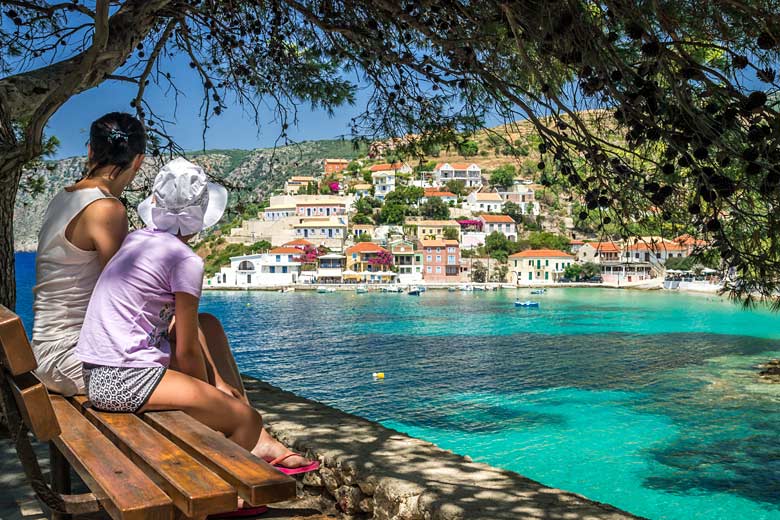7 reasons to leave your resort in Ahungalla, Sri Lanka
Let's face it, it's easy to let time fly when you're relaxing by the pool or propping up the bar in your all-inclusive resort. But Sri Lanka* has far more to offer and the area around Ahungalla* is far less developed than other resorts.
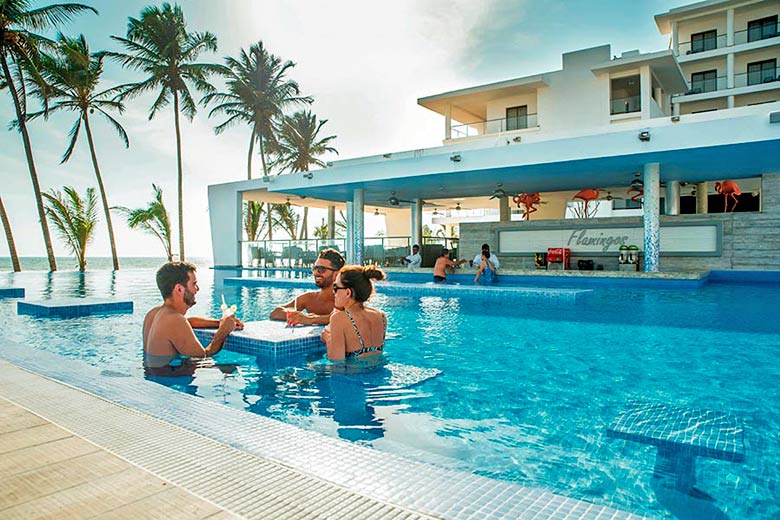
It's rewarding to explore, and you could do worse than starting at the two-mile sandy beach. Close by you'll find a turtle hatchery, mask museums, and the longest reclining Buddha in Sri Lanka. Cruise along the river where crocodiles, monitor lizards, and monkeys will be your companions.
Further afield is the historic town of Galle, with its colonial fort, and if you get up early you can go whale watching near Mirissa before rejuvenating yourself with a healthy Ayurvedic massage.
Getting to Ahungalla: browse great value deals on holidays with First Choice*, which departs from airports across the UK.
Hatching a plan
- Duration: a couple of hours or an evening
- Time from Ahungalla by car: 10 minutes
Turtles lay their eggs on nearby Kosgoda Beach and a cluster of turtle hatcheries line the road. Staffed by volunteers and funded by tourist donations, they buy the turtles' eggs from local fishermen and rebury them in safe locations.
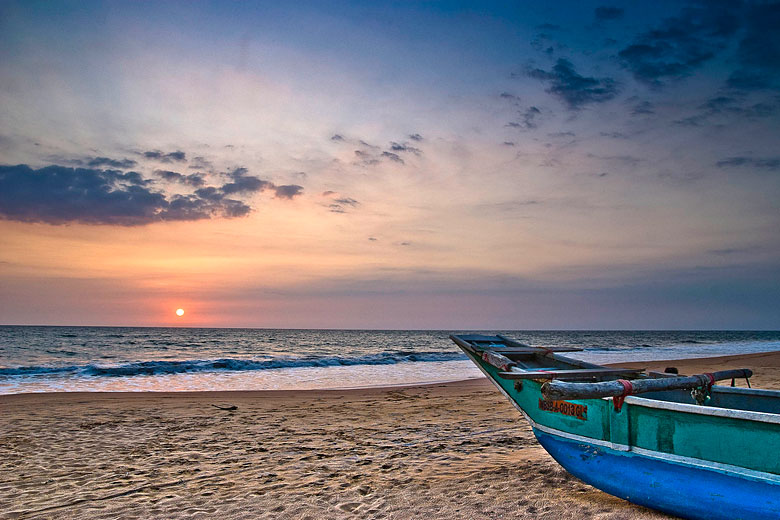
Hatchlings are kept in concrete tubs for a few days before being released into the sea. This usually happens shortly after sunset, and it's a rewarding sight to see them waddling off into their new life.
During the breeding season, there are evening beach patrols where, if you're lucky you see females coming ashore to lay their eggs in the sand.
Heal your body
- Duration: a couple of hours
- Time from Ahungalla by car: 10 minutes
Ayurvedic treatments are big in Sri Lanka, and you can find them in hotels, as well as specialist centres, all along the west coast. The technique dates back thousands of years, and the idea is to achieve balance in the body. It's more than just a way of treating illnesses, combining herbs, spices and oils as well as yoga and meditation.
A genuine course can take at least a week but most places offer a slimmed-down version. You'll get a herbal and steam bath followed by some sort of massage. Perfect after a hard day's sightseeing.
Up the lazy river
- Duration: half a day
- Time from Ahungalla by car: 10 minutes
Take a boat trip on the Madu River, a complex coastal ecosystem of mangroves, packed with hundreds of species of plants and animals.
Two species of crocodiles lurk in the shadows, purple-faced langur monkeys eat the fruit in the trees, monitor lizards glide slowly through the water and herons, cormorants, egrets and kingfishers wait patiently on the banks.
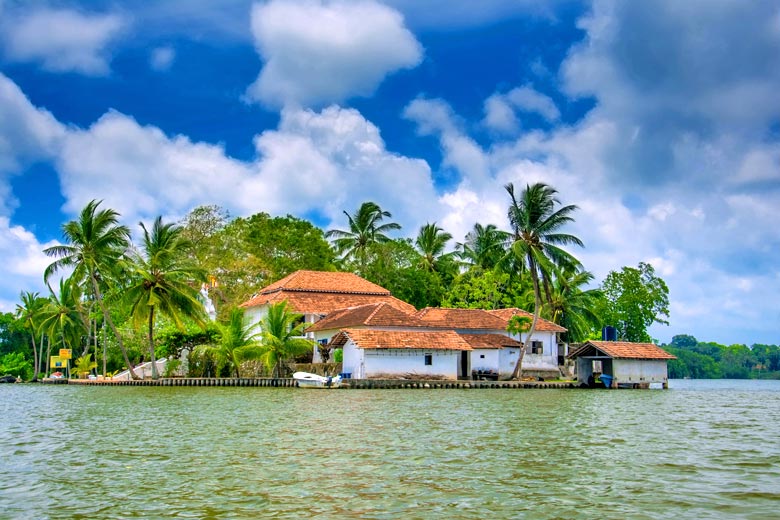
Boat operators gather around Balapitiya Bridge and offer one-to-three-hour trips. It's best to go early in the morning when prawn fishermen are busy dropping reed baskets into the water and birdlife is at its best.
Most tours stop at Madhuwa Island, which has two temples including one dedicated to the goddess Pattini.
| Ahungalla vital stats | |
|---|---|
| Distance from Colombo | 59 miles / 95 km |
| Peak season in Ahungalla | December to March |
| Best time to go to Ahungalla | March |
| Maximum daytime temperature | 29°C to 31°C |
| Daily hours of bright sunshine | 6 to 9 hours |
Behind the masks
- Duration: half a day or an evening
- Time from Ahungalla by car: 30 minutes
Mask and puppet making are local folk crafts in Ambalangoda. The town has two museums, both run by active mask makers. Most are made from kaduru, a light, pliable wood similar to balsa, making them light enough to be worn through long dance performances.
They're garishly painted with symbols to frighten away the demons, particularly important during exorcisms. They feature in traditional dances, dramas and comedies, as well as large pageants and processions, and have even been said to cure illnesses.
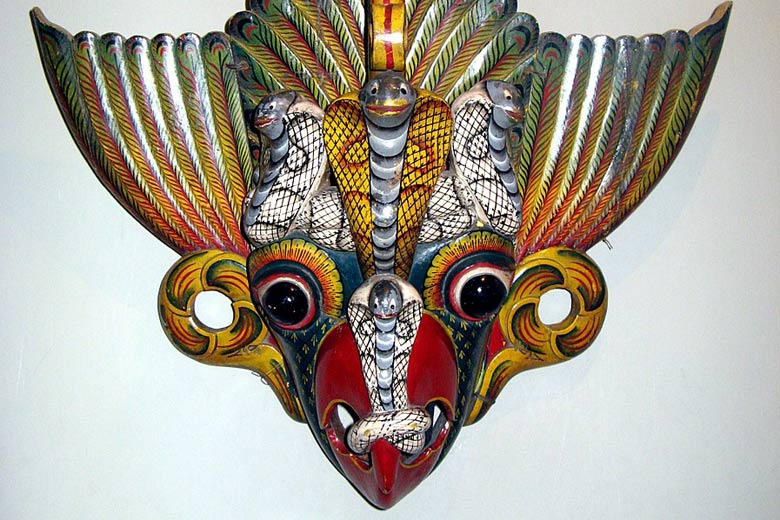
The two museums stand opposite each other so it's easy to visit both. Ariyapala & Sons is the largest and also contains several four-footed puppets, made from the same wood and manipulated with strings.
You can even buy small keepsake masks to take home so you can scare your own devils. Traditional dance performances are rare but there are occasional shows at the nearby Bandu Wijesooriya School of Dance.
Long sleeping Buddha
- Duration: half a day or an evening
- Time from Ahungalla by car: 30 minutes
Four kilometres outside Ambalangoda, high on a hill towering over cinnamon plantations, is the Sailathalaramaya Temple. The big attraction here is the reclining Buddha, at 35 metres the longest in South Asia, and painted bright orange and yellow.
Apparently, it's over 800 years old and is remarkably lifelike with wide eyes and an aquiline nose. In the outer chamber is a line of standing Buddhas, surrounded by statues of kings Dutugemunu and Elara riding elephants, with their soldiers running alongside.
Hold the fort
- Duration: whole day
- Time from Ahungalla: 1 hour
Galle* is the capital of the south and the buildings of the historic fort area reflect previous Portuguese, Dutch and British rule. Wander the narrow streets packed with quirky shops, cafés and hotels, and take in the period architecture.
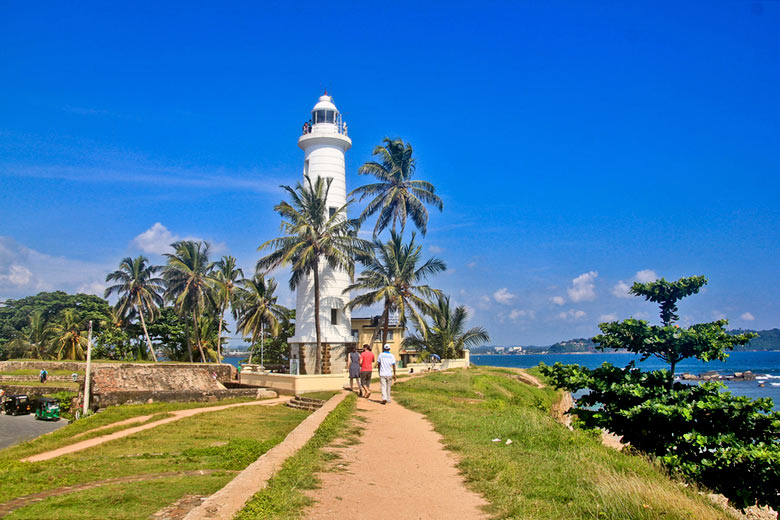
A couple of maritime museums are worth a visit and don't miss the white Dutch Reformed Church dating from 1752. Then climb up on the walls, which surround the city on three sides, and watch crazy local boys jumping off the bastion into the crashing waves below.
Suck on a fresh coconut and tour the ramparts. Tackling the full circuit will take around three hours, and make sure you're there in the late afternoon as the sunset is spectacular.
A whale of a time
- Duration: a day
- Time from Ahungalla: 90 minutes
Sri Lanka has become one of the world's best whale-watching destinations with Mirissa the prime spot, because of its deep waters. Peak season is between December and April when you're almost guaranteed to see blue whales. They're the world's largest living mammals, 30 metres long and weighing in at over 170 tonnes.
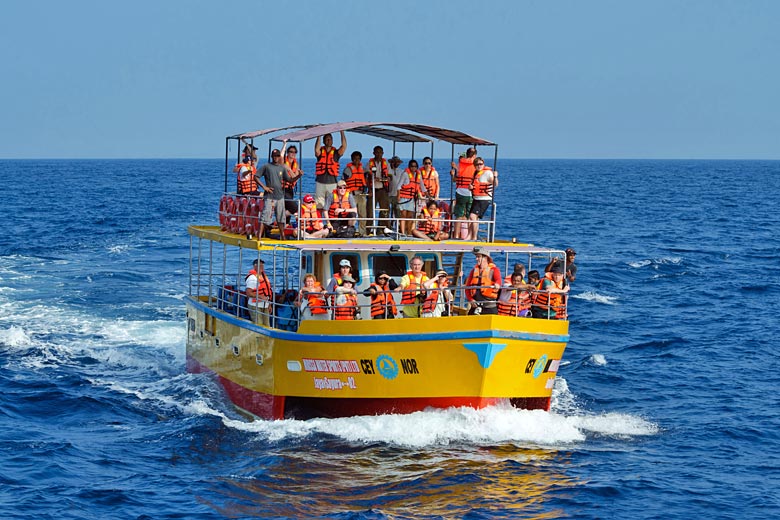
Boat tours depart from the harbour at around 6.30 am, so you'll have to get up early. Count on a trip of between three to five hours, depending on how many whales are around. There's also the added bonus of sighting sperm whales and dolphins but make sure you pack your sun lotion and a hat.
Weather in Ahngalla
| Jan | Feb | Mar | Apr | May | Jun | Jul | Aug | Sep | Oct | Nov | Dec | |
|---|---|---|---|---|---|---|---|---|---|---|---|---|
| Maximum daytime temperature °C |  30 30 |
 30 30 |
 31 31 |
 31 31 |
 30 30 |
 30 30 |
 29 29 |
 29 29 |
 29 29 |
 29 29 |
 30 30 |
 30 30 |
| Hours of sunshine (daily) | ||||||||||||
| Days with some rainfall |  5 5 |
 5 5 |
 8 8 |
 12 12 |
 12 12 |
 13 13 |
 10 10 |
 10 10 |
 12 12 |
 14 14 |
 14 14 |
 10 10 |
| Sea temperature °C |  28 28 |
 28 28 |
 29 29 |
 29 29 |
 29 29 |
 28 28 |
 27 27 |
 27 27 |
 28 28 |
 28 28 |
 28 28 |
 28 28 |
The above shows the weather in Ahungalla. Find out more about conditions across the country in our complete guide to the weather in Sri Lanka.
Ready to explore southern Sri Lanka? Check out the latest offers on affordable holidays from First Choice.
More about Ahungalla
- Overview
- Best time to visit
- Weather by month
- 5-day weather forecast
- Destinations
- Travel advice
- Deals & discounts
Ahungalla by month
Jan Feb Mar Apr May Jun Jul Aug Sep Oct Nov Dec
Explore holidays in the sun for less
- Beach holidays
- Family holidays
- City breaks
- Summer holidays
- Winter sun holidays
- Holiday offers
- Top travel brands
- Airlines & flights
- Discount hotels
- Airport parking deals
- TUI
- Jet2holidays
- easyJet holidays
- Love Holidays
- January sales
Airport parking
- Manchester Airport
- Stansted Airport
- Bristol Airport
- Luton Airport
- Birmingham Airport
- Edinburgh Airport
- Gatwick Airport
- Glasgow Airport
- Newcastle Airport
Airport lounges
- Manchester Airport
- Birmingham Airport
- Bristol Airport
- Edinburgh Airport
- Glasgow Airport
- Heathrow Airport
- Newcastle Airport
- Stansted Airport
- Gatwick Airport
Be inspired
Get your weekly fix of holiday inspiration from some of the world's best travel writers plus save on your next trip with the latest exclusive offers
We promise not to share your details


